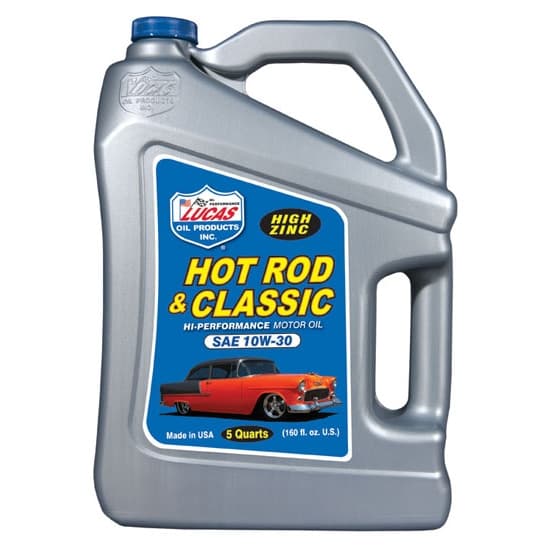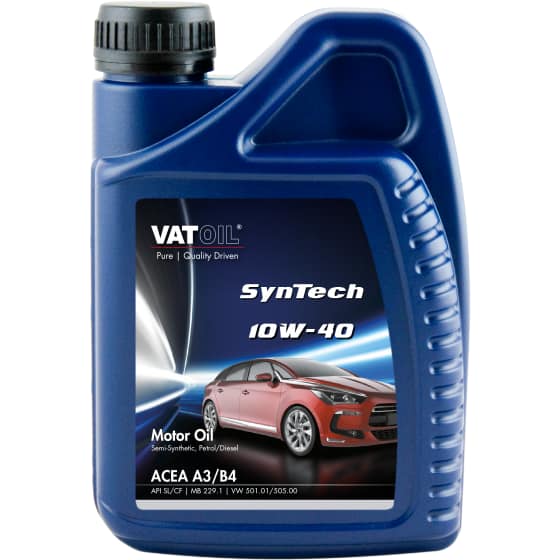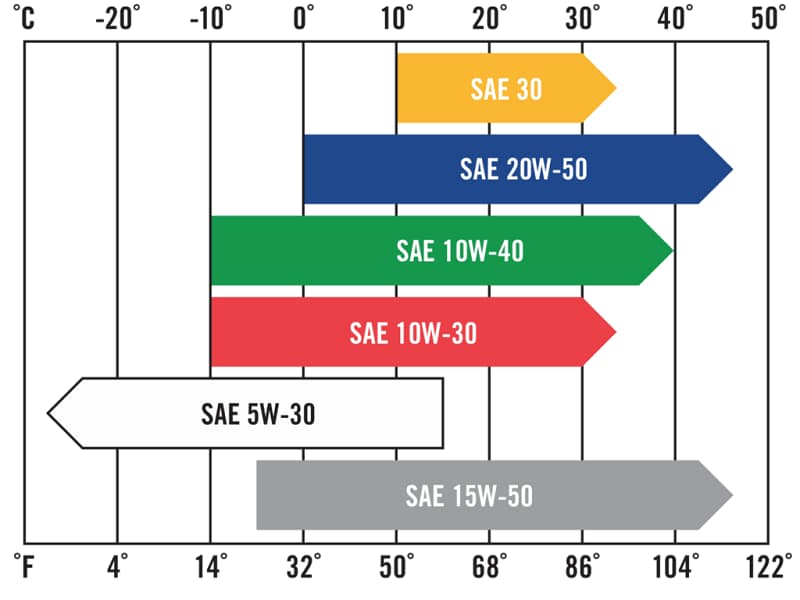The engine oil of a car has many functions. It avoids friction between mechanical parts and cools heating parts by combustion and ensures tightness. Several types of motorcycle and car engine oils differ in their viscosity. In this article, we focus on the differences in viscosity between the oil 10W30 vs 10w40.
Contents
10W30 vs 10W40 Oil
The lubrication system is the engine's circulatory system. A simple viscous fluid is vital to the engine. The tasks it solves are vast.
- Reduces friction between moving parts, reduces wear.
- Protects structural parts of the engine against corrosion.
- Eliminates excess heat.
- Reduces noise and vibrations.
- When the engine is running, impurities from that stick to the walls and affect the performance of the engine. The oil keeps them in suspension, preventing them from precipitating.
- Makes it easier to start the engine in the cold season.
- With various additives, engine oil consumption is reduced.
- In fuels rich in sulfur, acidic compounds are formed. It neutralizes them with engine oil.
10W-30 Oil
The winter designation is present in this 10W-30 engine oil. It means that it is perfect in winter. Most of the major manufacturers of oil products produce it. 10W-30 conventional is suitable down to 0 degrees F according to most manufacturers.

10W-30 Oil
10W-40 Oil
10W-40 oil is a champion in the prevalence among motorists. It is also suitable for the cold season. Thanks to its properties, it facilitates the starting of the engine, even in winter, facilitating the work of the starter.

10W-40 Oil
Main Features of 10W30 vs 10W40 Oil
All motor oils have several important characteristics that you need to know to make the right choice for your engine. We apply them to cartridges as alphabetical letters and numeric notation.
1. Car oil viscosity indices
It is necessary to distinguish two levels of viscosities for engine oil:
- A grade to cold: It precedes the letter W and is the engine's ability to cold start. And describe the viscosity of engine oil at low temperatures. The lower the number, the thinner the oil. Low-temperature dilute oils are good oils because they move more easily and provide good protection for the engine when starting cold. If the oil is too thick at start-up, the oil will be difficult to operate in the engine and reduce fuel economy.
- A grade at hot: Hot kinematic viscosity comes by the number following the letter W. Is the viscosity index corresponding to the viscosity of the oil. The higher this number, the greater the viscosity of the oil, the slower the flow rate. It is recommended to use oil with the viscosity index recommended by the manufacturer to ensure the best performance of the vehicle engine.
As an illustration, a 10W-40 oil is thicker than a 10W-30 oil. Thick oil is suitable for older machines and will limit the risk of leaks.
Conversely, a more fluid oil is suitable for vehicles equipped with an automatic transmission of the DCT type. It facilitates the circulation of the oil in the gearbox and the engine. If you often travel in town on a motorcycle and car, it is ideal to use a more fluid oil to lubricate the mechanics of your four-wheeler.
2. Which car engine oil should I use?
- For use at low temperatures (between -20 and +20 degrees Celsius) use 5W-30 oil.
- For temperate climates (between -10 and +30 degrees Celsius) option for a 10W-40 oil.
- For tropical climates (between 0 and 50 degrees Celsius) choose a 15W-50 oil.
- For all temperatures (from -20 degrees Celsius) option for a 5W-50 or 10W-50 oil.
- With temperatures not exceeding -30°C/-22°F in the winter or 35°C/95°F in the summer, use 10W-30 motor oil.
Also, choose a 10W-40 semi-synthetic oil if your motorcycle or car is constantly running below 9,000 rpm. If you are running in, 15W-40 mineral oils will be ideal. If your motorcycle or car is constantly going above 10,000 rpm, it is better to choose synthetic oils such as 5W-30 or 5W-40.
All About Oil Standards
The oils are subject to several standards. There are two certification bodies: API (American Petroleum Institute) and ACEA. Three groups of ACEA standards should be distinguished.
- A for gasoline engines;
- B for tourism diesel engines;
- E for heavy-duty and utility vehicle diesel engines.
Petrol engines are subject to the following standards:
- A1-96: energy saving oils;
- A2-96: oils for normal use;
- A3-96: heavy-duty oils.
A code formed of two letters represents the performance level API. The first code denotes the engine type (the letter "C" means the oil is suitable for a diesel engine and The letter "S" means the oil is suitable for a gasoline engine). Otherwise, the second one is the performance.
For a modern motorcycle that comes with a dry catalytic converter and clutch, it is advisable to opt for oil with API SJ standard because the SJ level guarantees a low phosphorus content. Although phosphorus is an anti-wear additive, it can damage the catalyst.
1. Classification by the Society of Automotive Engineers USA - SAE
It shows the viscosity of the oil at the minimum and maximum temperature values, as well as the climatic conditions of use. For oils bearing the marks 10W-30 and 10W-40, they are:
- W - winter oil
- 10 - Indicates the viscous' resistance to freezing at negative temperatures, or cold start, and it's the ability to be pumped easily at -30 degrees Celsius and easily cranking viscosity at -25 degrees Celsius
- 30 - oil can be available at the maximum temperature of 30 degrees Celsius
- 40 - oil can be available at the maximum temperature of 40 degrees Celsius
Although motor oils are only suitable in summer and winter, they are still widely available in all seasons. There are currently eight pieces from 0W to 20W. When choosing, we should consider that the SAE marking has an important nuance. We can place a hyphen before the last two digits. With its designation in the literature and on the Internet, this requirement is overlooked.
2. Classification according to the American Petroleum Institute - API system
The first letter will show the type of engine such as S stands for gasoline engine or C stands for diesel. The second letter shows the performance of the lubricant. There is a simple rule that the more the letter is in the Latin alphabet, the better its properties. The oil with SF marking will be worse than SJ. We do not intend for more extreme conditions.
In addition, it is vital to know that motor oils are of three types depending on the method of production, although their labeling will be the same. They produce mineral motor oil from processed oils. It is the cheapest form that has the most unsatisfactory characteristics. It is strongly oxidized, clogs the engine with slag, and requires frequent replacement.
Superior class semi-synthetic oil is made based on minerals. With the addition of synthetic additives (up to 20-30%), it allows minimizing its negative properties. The price category is slightly higher.
Synthetic oil is a product of chemical synthesis. In the production process, it has many characteristics that are kept even under the hardest conditions. Because of its properties, it keeps viscosity at all temperatures and does not clog the engine. The most expensive type of motor oil.
10W30 Vs 10W40 Oil: What Is The Difference?

As shown by the SAE marking, their viscosity distinguishes 10W-30 and 10W-40 oils at maximum temperatures. If the viscosity index is too low, the pressure in the lubrication system will be insufficient. It can lead to a lack of oil in the engine that would lead to excessive wear of the friction pairs. Overall, it is not the best effect on engine resources.
For engines with half the service life, a higher viscosity index oil is necessary. It is vital in summer when the engine is warmed up to its maximum. So, the role of oil is crucial. It is not only cooling the friction parts but reducing the gaps to eliminate the increased wear of the structural elements of the engine.
Applications
Under the conditions of central Russia, the best choice would undoubtedly be motor oil with the 10W-40 marking. It will keep its properties at a temperature of over 35 degrees Celsius that is often established in most parts of our country.
It is also suitable for cars with high mileage as the engine of the shape and the best times. For their normal operation, viscous oil is suitable. As mentioned above, it is necessary to create pressure in the lubrication system and reduce the spaces between the rubber parts. As with 10W-30, this type of lubricant is suitable for a slightly colder summer, when the thermometer does not exceed 30 degrees Celsius.
Conclusion
In conclusion, to choose an engine oil suitable for your car or motorcycle, it is ideal to follow the instructions given in the user manual. The price of a car or motorcycle engine oil depends on its specificity. As a sign, it is advisable to envisage a budget of 10 to 20 dollars per liter. Avoid using auto oil as the specific additives it contains can damage your clutch.
I’m Ivo Gievski, the content writer for Tireer. We built our website with over 15 years of experience and extensive research in the automotive and technology sectors. My dedication to delivering high-quality content is unwavering, and I strive to continuously hone my skills to stay ahead of industry trends and provide readers with informative, engaging, and valuable insights.